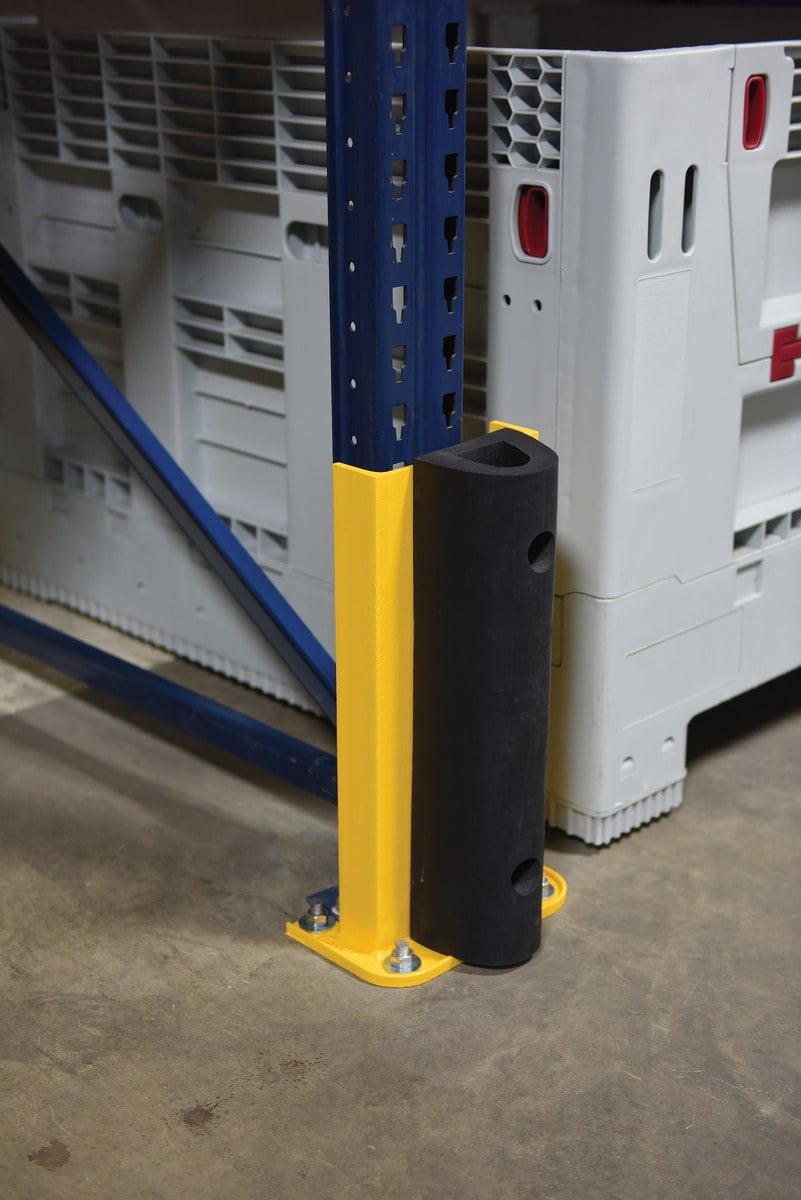🔹 What Rack Guards Do
-
Prevent Damage – They absorb impact from forklifts, pallets, and equipment, protecting upright frames and rack corners.
-
Improve Safety – Damaged racks can collapse, creating serious hazards. Guards help prevent structural weaknesses.
-
Reduce Repair Costs – By protecting racking, companies avoid expensive replacements and downtime.
🔹 Common Types of Rack Guards
-
Upright Guards
-
Wrap around or bolt onto rack uprights to prevent dents and bending.
-
Often made from steel or heavy-duty plastic.
-
-
End-of-Aisle Guards
-
Protect rack corners at aisle intersections, which are the most vulnerable spots for forklift collisions.
-
Usually heavy-duty steel barriers anchored to the floor.
-
-
Rack Back Guards / Safety Panels
-
Mesh or steel barriers attached to the back of racks.
-
Prevent items from falling off the back side into walkways or work areas.
-
-
Post Protectors
-
Individual protectors that slide over or anchor at the base of each upright post.
-
-
Floor & Frame Guards
-
Low-profile barriers that keep forklifts and carts from hitting the lower rack areas.
-
🔹 Materials & Designs
-
Steel Guards – Strongest, most durable, often powder-coated safety yellow for visibility.
-
Plastic/Poly Guards – Flexible, impact-absorbing, and easy to install without drilling.
-
Anchor-Mounted – Bolted directly into the floor for permanent, heavy-duty protection.
🔹 Benefits in a Warehouse
-
Enhances workplace safety compliance (OSHA considers rack protection a best practice).
-
Creates a more organized warehouse by reducing clutter from damaged racks.
-
Offers peace of mind knowing inventory and employees are protected.
👉 In short: Rack guards are an affordable investment compared to the high costs of rack repair, inventory loss, or injury from racking accidents.
Check out our Rack Protectors!

